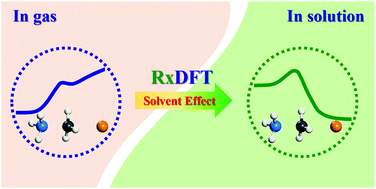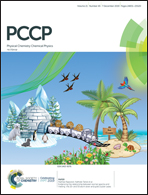A reaction density functional theory study of the solvent effect in prototype SN2 reactions in aqueous solution
Abstract
The bimolecular nucleophilic substitution (SN2) reaction is a fundamental and representative reaction in organic chemistry, and the reaction rate is sensitive to the choice of underlying solvents. Herein, we investigate the solvent effect on the free energy profiles of two paradigm reactions in aqueous solution, i.e., symmetric and asymmetric SN2 reactions, by using the proposed multiscale reaction density functional theory (RxDFT) method, which employs quantum density functional theory for calculating the intrinsic reaction free energy coupled with classical density functional theory for addressing solvation contribution. The solvent effect is quantitatively addressed with RxDFT by examining the changes in the free energy profile of the chemical reaction from the gas phase to the aqueous solution. The complete descriptions of the free energy profiles in aqueous solution for the SN2 reactions based on RxDFT agree well with the results from the Specific Reaction Parameterization (SRP) quantum model, QM/MM and the RISM/SCF method. Overall, the RxDFT method is an efficient tool to predict the free energy profile and address the solvent effect of chemical reactions with satisfactory accuracy and low computational cost.



 Please wait while we load your content...
Please wait while we load your content...